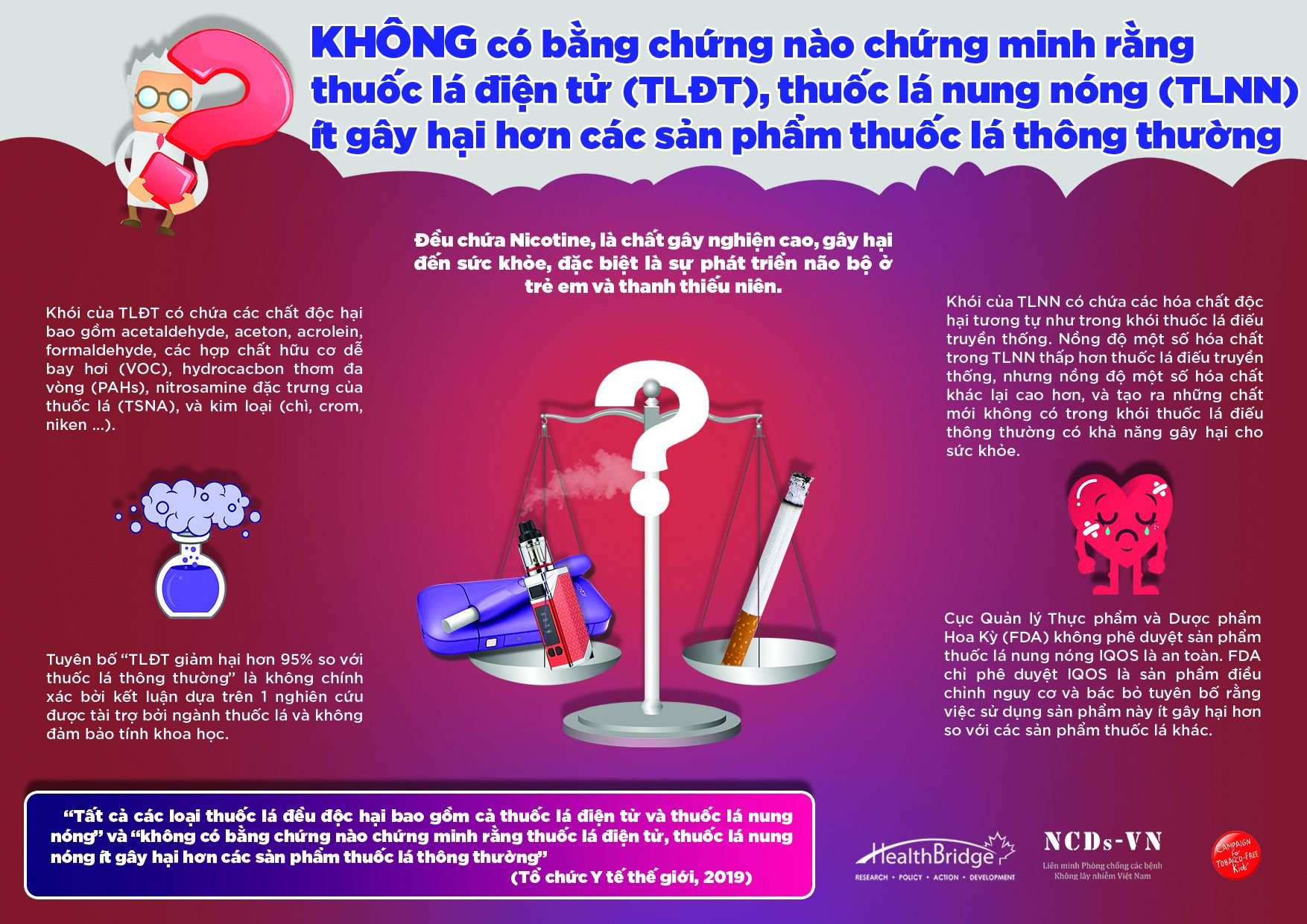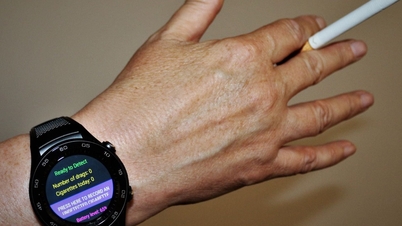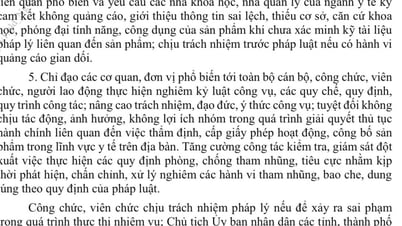Anti-smoking policies have had an effect.
Policies to limit smoking and programs to promote the harmful effects of smoking by the management agency in recent years have also had an effect when the smoking rate decreased from 22.5% to 21.7%, lower than the world average of 22.3% (according to Vess research). That small encouraging number seems to be insufficient to compare with the harm that tobacco has caused and is causing to society.
According to MSc. Dr. Nguyen Tuan Lam - WHO warns: in Vietnam, tobacco use kills more than 40,000 people each year. 21% of deaths in men are related to tobacco. Economic losses due to the harmful effects of tobacco were about 24,000 billion VND in 2012, equivalent to nearly 1% of Vietnam's GDP.

The Ministry of Health also admitted: The smoking rate among men has not yet reached the set target of reducing to 37% by 2020. (In 2020, it was 42.3%).
One of the main reasons for the high and slow decline in smoking rates in Vietnam is that cigarette prices are still very cheap, and are even getting cheaper compared to income.
The tax rate on retail price of cigarettes is currently low, accounting for only 38.8% (2020), lower than the average of middle-income countries (59%), lower than most countries in the ASEAN region (Brunei 81%, Thailand 70%, Singapore 69%, Malaysia 57%, Indonesia 51%; Myanmar 50% and developed countries such as: Australia 62%, Germany 75%, France 80%,...), and far from the WHO recommendation of 75%.
Cigarette prices in Vietnam are getting cheaper compared to per capita income and inflation, making cigarettes more affordable for the poor. A pack of regular cigarettes costs only about 15,000 VND and this price has remained almost unchanged for 10 years from 2010 to 2020.
Based on the above facts, experts believe that tobacco use needs to be further controlled and increasing excise tax on this product as recommended by WHO is necessary.
“Young people and the poor are the ones who respond best to price changes,” said Dao The Son, a tax consultant at Vital Strategies. “Therefore, it is reasonable to assume that if prices increase, tobacco use will decrease.”
E-cigarettes - a risk of becoming an epidemic for teenagers?
According to the Ministry of Health, in recent years, many products called electronic cigarettes and heated tobacco products have appeared, designed in a variety of styles and flavors that are very attractive to young people. While the rate of smoking conventional cigarettes has decreased, the rate of using electronic cigarettes has increased rapidly.
According to a 2019 WHO survey, the rate of e-cigarette use among 15-17 year old students in Vietnam was 2.6%. By 2022, this rate had increased to 3.5% among 13-15 year olds.
Students are the young generation of the country, most of whom are in the process of physical and intellectual development. If they use harmful electronic cigarettes, it will be extremely worrying for the intellectual health of the future generation.
According to research by MSc. Nguyen Hanh Nguyen, HealthBridge Canada Vietnam, to date, WHO has confirmed that there is no specific evidence that e-cigarettes are less harmful than traditional cigarettes. Both types cause dangerous acute and chronic diseases.
"Electronic cigarettes also cause diseases such as cancer, cardiovascular disease, and blood pressure. More seriously, there are acute diseases such as "Evali acute lung injury syndrome" (first discovered in 2019 in the US); in addition, electronic cigarettes use batteries that can easily cause fire and explosion, causing injuries to the jaw and face; and most notably, this product is easily mixed with drugs and other banned addictive substances," said Master Nguyen Hanh Nguyen.
Vietnam has not yet decided on a specific policy on banning or increasing taxes on e-cigarettes. While the Ministry of Health believes that they should be banned, the Ministry of Industry and Trade proposes to manage (increase taxes) them like traditional cigarettes.
MSc. Nguyen Hanh Nguyen pointed out the lesson that countries that do not ban e-cigarettes have not achieved their goal of reducing youth use. “For example, in the US, in just a short period from 2011 to 2019, this rate seemed to become an epidemic, increasing from 1.5 to nearly 30%. By 2019, the US government was forced to tighten it further with many other measures,” said Ms. Hanh Nguyen.
Indeed, if it becomes an epidemic for the younger generation, it will be a huge burden on society. But introducing a “ban” policy is not smooth because of the risk of encountering barriers from the tobacco industry.
“For example, Malaysia, a neighboring country of Vietnam, took nearly two years to pass a bill banning smoking for minors,” said Dao The Son, a tax consultant at Vital Strategie, commenting that “the tobacco industry has influenced policy, causing decisions to delay the issuance of the bill.”
In Vietnam, it is not known whether state management agencies will face such barriers or not. But certainly, consumers using less toxic products will bring great benefits to the country. And that is the motivation for managers to make the right decisions, beneficial to the health of users and the economy.
Source



![[Photo] Readers line up to visit the photo exhibition and receive a special publication commemorating the 135th birthday of President Ho Chi Minh at Nhan Dan Newspaper](https://vphoto.vietnam.vn/thumb/1200x675/vietnam/resource/IMAGE/2025/5/17/85b3197fc6bd43e6a9ee4db15101005b)
![[Photo] More than 17,000 candidates participate in the 2025 SPT Competency Assessment Test of Hanoi National University of Education](https://vphoto.vietnam.vn/thumb/1200x675/vietnam/resource/IMAGE/2025/5/17/e538d9a1636c407cbb211b314e6303fd)
![[Photo] Prime Minister Pham Minh Chinh chairs meeting on science and technology development](https://vphoto.vietnam.vn/thumb/1200x675/vietnam/resource/IMAGE/2025/5/17/ae80dd74c384439789b12013c738a045)
































![[Photo] Nearly 3,000 students moved by stories about soldiers](https://vphoto.vietnam.vn/thumb/1200x675/vietnam/resource/IMAGE/2025/5/17/21da57c8241e42438b423eaa37215e0e)

































































Comment (0)